Ussat-les-Bains
Interview with Jeanne D'Aout: New book with Otto is out
Q: It’s nice to meet you again. Congratulations on your new book!
The new book, The Eye of Ra, also features Otto Rahn. I know every new book is always a breakthrough for a real writer. What was your main finding?
A: My most important discovery while writing my second book, ‘The Eye of Ra’, is the incredible experience of having lots of questions and finding out as soon as I started writing, that I had the answers already within me. Writing activates something in the brain that helps you understand certain things that are normally difficult to understand. Writing ‘The Eye of Ra’ took me back to ancient Egypt, where I set myself the quest of discovering the identity of the Biblical divination stones known as the Urim and Thummim, and to understand the psyche behind the heretical Pharaoh Akhenaten.
Otto Rahn y la Búsqueda Nazi por el Secreto de los Cátaros
La Berlin de entreguerras era una ciudad conocida en toda Europa por su sub-cultura bohemia y sus jovenes intelectuales. Entre los personajes que ardientemente celebraban los abundantes «ismos» que estaban fracturando las viejas certezas ideologicas, las cuales habian compactado el siglo XIX, pocos individuos eran mas coloridos que un joven de ojos verdes y cabellos oscuros llamado Otto Rahn. Su figura delgada, envuelta en un caracteristico abrigo negro y sombrero tiroles, arrojaba una larga sombra desde esos anos sombrios, una «gran silueta» alrededor de la cual se han acumulado los mitos mas extravagantes. El fue considerado igualmente como mason, rosacruz, luciferino, y un agente de la Sociedad Thule. Como lo plantea el autor Phillip Kerr, los contemporaneos de Rahn no se habrian sorprendido de ver «la Dama Escarlata y la Gran Bestia salir volando desde la puerta del frente» de su apartamento en Tiergartenstrasse. Uno de sus companeros de la Orden Negra de Heinrich Himmler comento en un memorandum interno que el «medio sospechaba que Rahn tenia relaciones con el pueblo pequeno».
Postcard send by Otto Rahn to his father Karl from Ussat-les-Bains, August 1, 1932
Postcard send by Otto Rahn to his father Karl from Ussat-les-Bains< at 1.8.1932
The postcard of Des Marronieres signed with the Otto's hand
Des Marronieres, Ussat-les-Bains, Avenue de la Gare (appr. 1932). The postcard sent by Otto to his father Karl showing his new property. The Otto handwriting is as usual terrible.
Des Maronniers, the former residence of Otto Rahn in Ussat-les-Bains
Des Maronniers, the former residence of Otto Rahn in Ussat-les-Bains<
View from the Otto's living room in Ussat-les-Bains
View to the Montsegur from the Otto's living room in Ussat-les-Bains, the Hotel-Restaurant des Marroniers.
Photo by Andrew Gough<
White Lie by Jeanne D'Aout
The Secret of Otto Rahn - Relic Hunter
The nineteen thirties, Nazi Germany. Organisations like the Nordische Gesellschaft and the Thule Gesellschaft were researching the origin of the Germanic people, the Arian race. Obsessed with the ancient cultures which connected their ancestors, they searched all corners of the earth trying to find relics and remains of these old civilizations. Relic hunter Otto Rahn seached for the Grail treasure. Here, in Occitania.
Rahn visited Occitania many times and stayed for months at the time during 1929 - 1932. In '32 he leased a hotel called 'Les Maronniers' in Ussat-les-Bains. On the photo we see him entertaining his mother in the garden of the hotel. He is wearing a sweater which his mum nitted for him, showing the symbol of the Thule Gesell-schaft of which he was a member. When the hotel went bankrupt, he had to leave France.
Le Mystère Otto Rahn - Du catharisme au nazisme (Le Graal et Montségur), août 1978, Christian Bernadac
Christian Bernadac, avançant de "coïncidences en coïncidences" propose une solution au "Mystère Otto Rahn". Otto Rahn serait devenu Rudolf Rahn, collaborateur d'Abetz à Paris avant de terminer la guerre Ambassadeur du Reich à Rome, alors que le chef militaire en Italie était ce même Karl Wolff qu'il aurait connu à Ussat-les-Bains avant de le retrouver à l'état-major privé d'Himmler. Oui! Aucun romancier n'aurait pu imaginer un tel destin.
Le "Mystère Otto Rahn" est un livre que ne ressemble à aucun autre; si l'enquête occupe le corps principal de l'ouvrage. Christian Bernadac profite "des jours et des lieux" pour "débarbouiller" le catharisme des mensonges, des invraisemblances, des détournements, des mystifications dont l'ont affublés charlatans, "exploiteurs de lumières" et membres de sociétés ésotériques ou secrètes. Une oeuvre salutaire qu'attendaient les véritables amoureux de Montségur et des "Parfaits".
Otto Rahn im Wikipedia
Otto Wilhelm Rahn (* 18. Februar 1904 in Michelstadt im Odenwald; † 13./14. März 1939 bei Söll (Tirol), Österreich) war ein deutscher Schriftsteller, Mediävist und Ariosoph,[1] der sich mit dem Gralsmythos beschäftigte.
Leben
Schule und Studium
Rahn wurde 1904 in Michelstadt/Odenwald als erstes Kind des Justizamtmanns Karl und Clara Rahn (geb. Hamburger) geboren. Ab 1910 besuchte er das humanistische Gymnasium erst in Bingen, wo er bis zum Beginn des Ersten Weltkriegs lebte. Sein Abitur machte er in Gießen. Dort begeisterte ihn sein Religionslehrer Freiherr von Gall erstmals für die Geschichte der Katharer. 1922 begann Rahn ein Jurastudium in Gießen, das er an der Albert-Ludwigs-Universität Freiburg und der Universität Heidelberg fortsetzte. 1925 bis 1928 unterbrach er sein Jurastudium und betätigte sich als Handelsreisender für verschiedene Verlage.

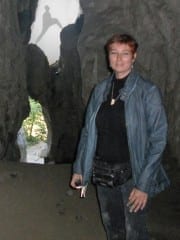

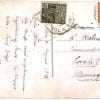
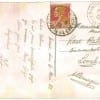
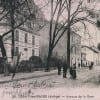
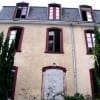

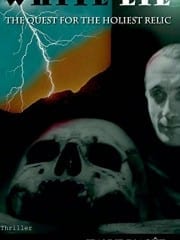
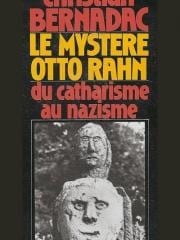

Recent comments
13 years 44 weeks ago
13 years 45 weeks ago
13 years 45 weeks ago
13 years 45 weeks ago
13 years 48 weeks ago
14 years 2 weeks ago